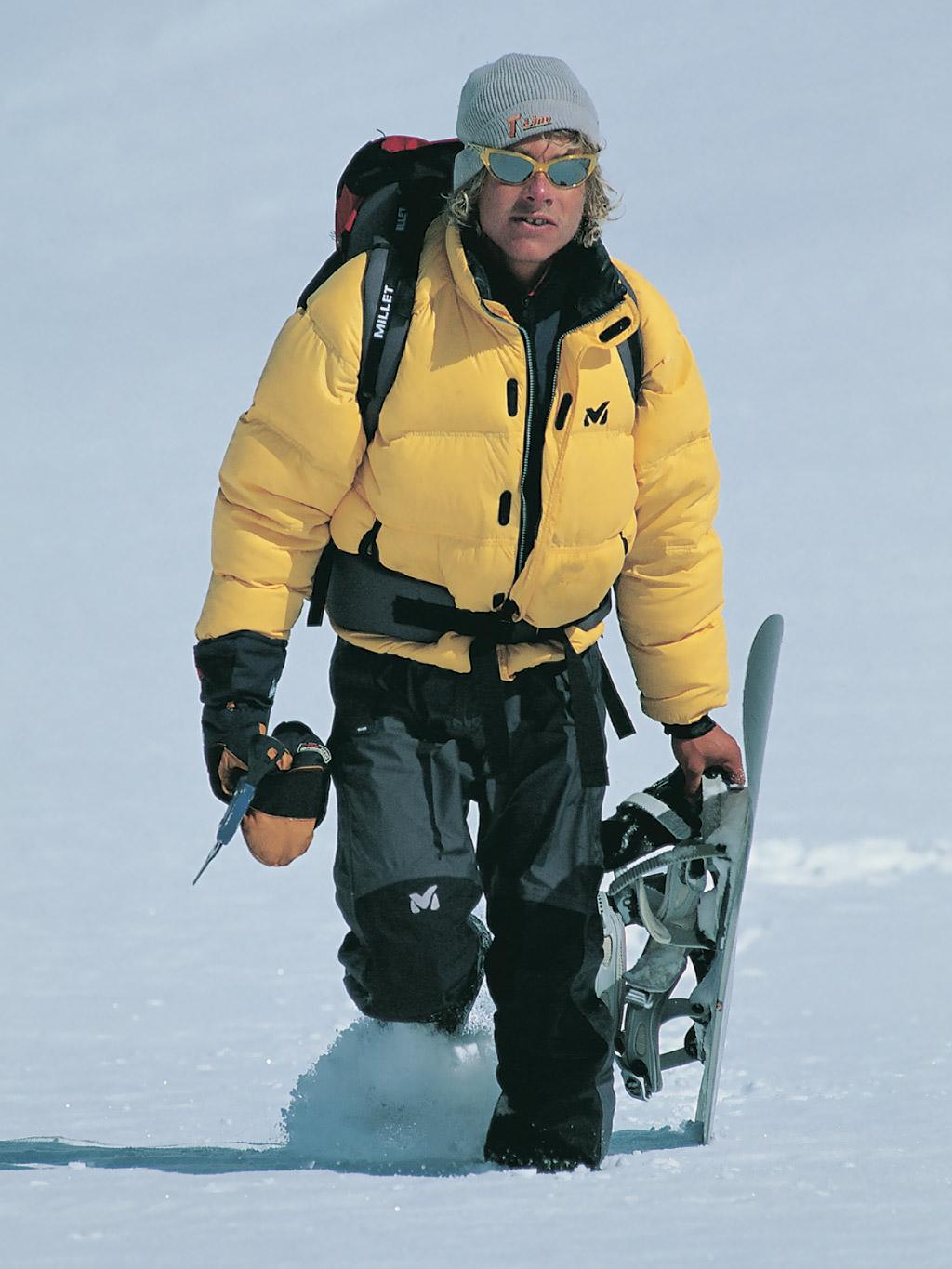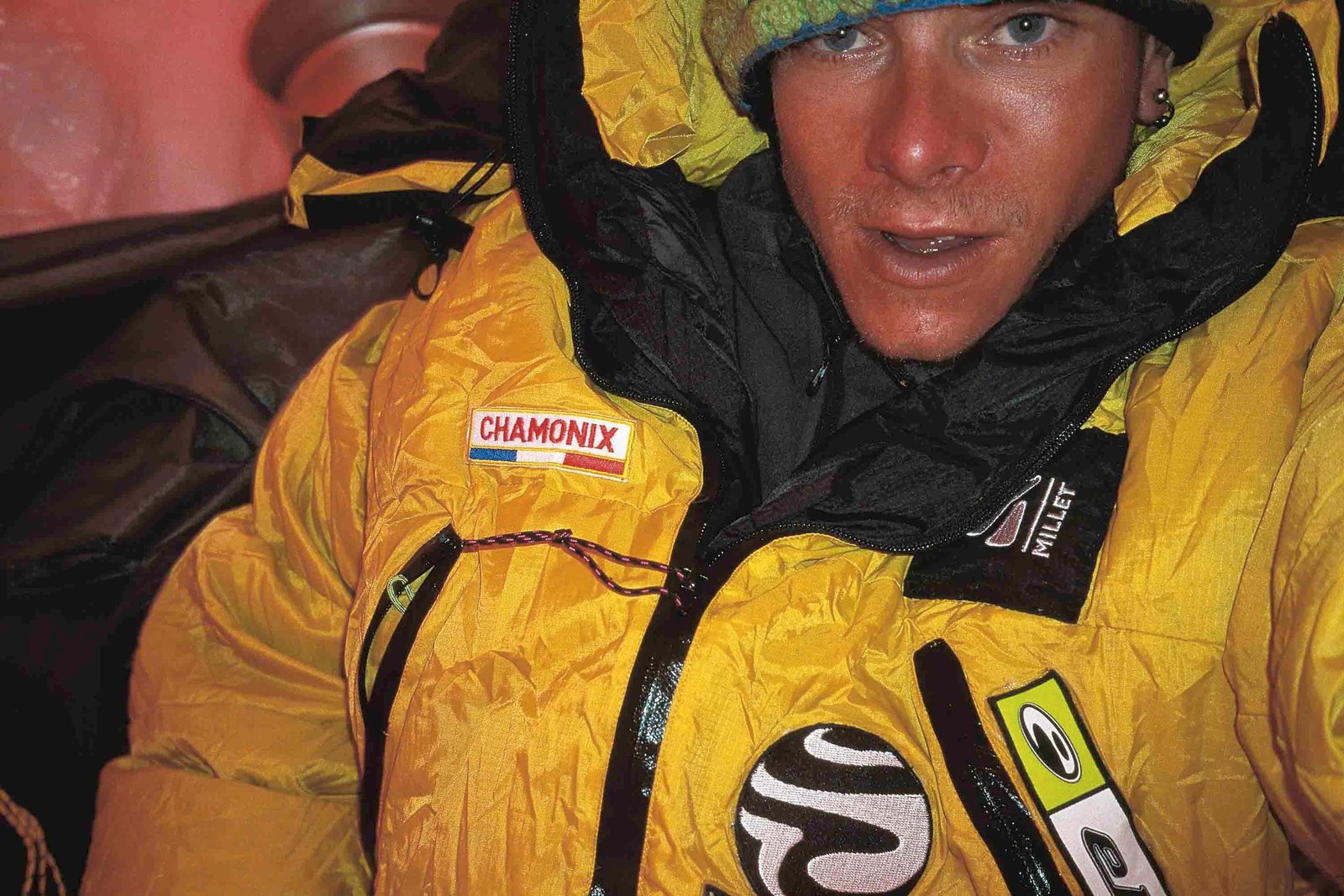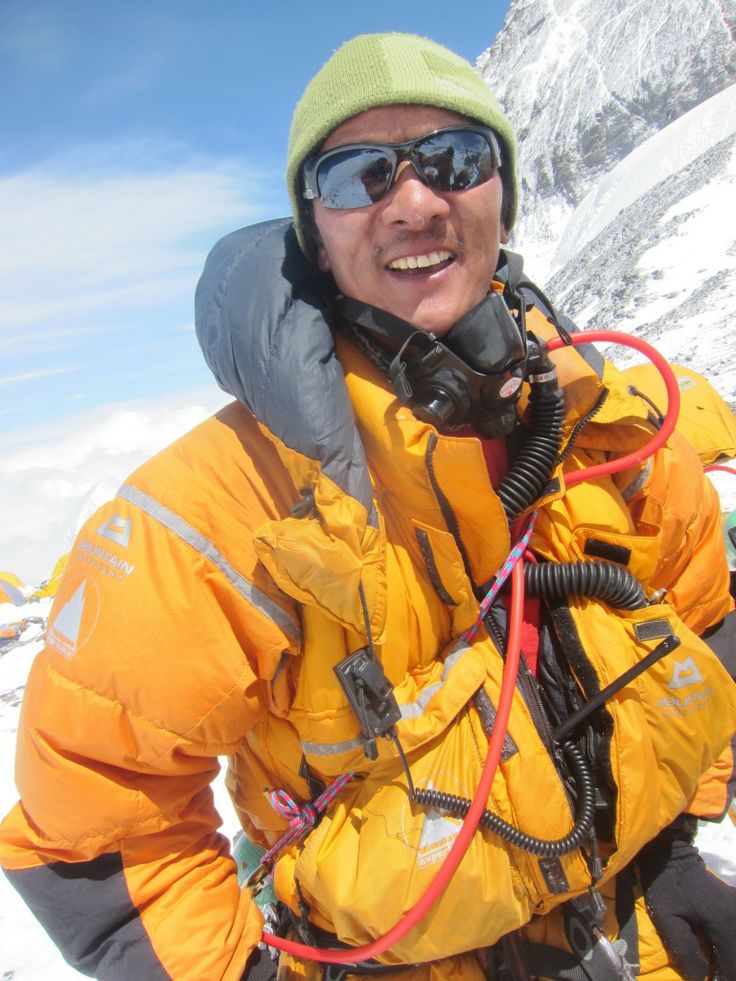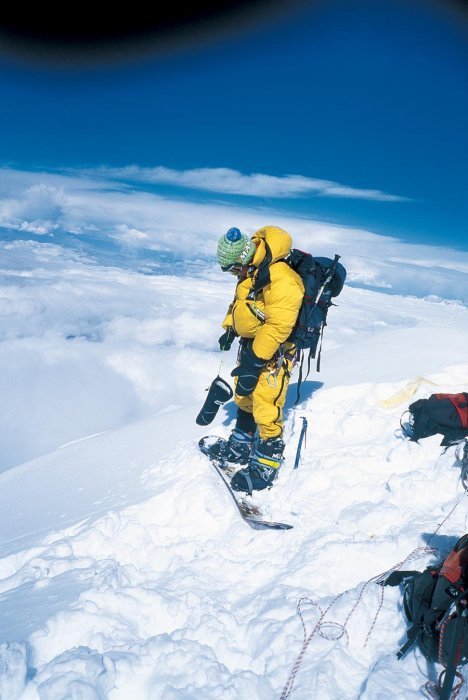Fiction
The Vignette Review
Reading Time: 1.5 minutes
[button color=”blue” size=”” type=”square” target=”” link=”http://www.thevignettereview.org/?article=bedroom-near-fort-tyron-park-by-jw-kash”]Read Now[/button]
Subscribe here:
Fiction
Reading Time: 1.5 minutes
[button color=”blue” size=”” type=”square” target=”” link=”http://www.thevignettereview.org/?article=bedroom-near-fort-tyron-park-by-jw-kash”]Read Now[/button]
Subscribe here:
Snowboarders, as a class of people, are notorious for being rebels. They party hard, break multiple bones, roll perfect joints in 10-15 seconds, wear strange patchworks of tattered clothes, prefer energy drinks over water (according to their sponsors), prank each other incessantly, are partial to toilet humor, don’t mind shitting outdoors in sub degree temperatures, and throw their battered bodies off of abandoned buildings to land on a rail and capture a SIIIIIIICK. Where did this lifestyle originate and where is it going? Are snowboarders entitled, goofy, self-centered idiots or epic, artistic, purpose-driven heroes? And before we get to Marco Siffredi (the first man to snowboard continuously down Mount Everest) and his place in this powdery microcosm of awwweessomee brooo, who was the first person who stood on the summit of a snowy mountain, icy wind lashing through dirty dreads, and spake: “I will tie my feet to this wooden plank…and shred this gnar”?
It all began with Sherman Poppen. He was a surfer/engineer who in 1964 bolted two kids skiis together as a Christmas gift for his daughter. Then, in 1965, a bowling ball manufacturer took this idea and manufactured the snurfer:
It cost $15 and 1 million snurfers were sold in the next decade. But this was just a silly toy.
Meanwhile, in glorious upstate New York, Dimitrije Milovich was sliding around on cafeteria trays in the snow. What a beast. He began to develop snowboards following the example of the new short surf boards. He experimented with laminating glass and gravel on the board and also used nylon straps. In 1975, he created a company called “Winterstick” which is considered the first snowboard company:
They were mentioned by Playboy and Newsweek in 1976, and by 1980 they were broke.
Meanwhile, Jake Burton Carpenter, a 23 year old student in 1977, was obsessed with the Snurfer. He was snurfing all day and snurfing all night. He kept on improving the toy: foot straps for better control, fins for more stability. He started his own company in 1977. It still exists today:
Throughout this birthing decade, snurfers and such were not allowed on ski resorts. (Those pompous, tight-ass skiers probably had a sense that their arch-enemies were rising from the rad depths of gnarly hell.) The first snowboarders would go to resorts at night, walk up the trails, and ride down secretly in order to avoid a penalty. Even back then, snowboarders were rebels.
And while all this was going on, a little boy was born in a manger on May 22, 1979 in Chamonix, France. Chamonix is the extreme mountain sports capital of the world. The town was the host of first Winter Olympics in 1924 and is located in a valley 3,810 meters below the highest summit in Western Europe: Mount Blanc. The snowboarding messiah was the fourth child of a climbing family. His father was a mountain guide and his older brother would die in an avalanche. The “boy who liked to live” was named was Marco Siffredi:

Fast forward through unruly childhood (in which he cut up his teeth multiple times which gave him his gap toothed smile):
In 1996, only a year after learning how to snowboard, Marco accomplished one of the valley’s “test pieces”: the Mallory on the North Face of the Aiguille du Midi, a 1,000 meter exposed rock garden with passages close to 55 degrees:

To end that season, Marco became the first snowboarder to descend Chardonnet (sustained 55 degrees) with his best friend, Philippe Forte. Phillipe would die the next year in an avalanche on Chamonix’s Grands Montets ski area.

But what put Marco on the map was in 1999, at the age of 20, when after snowboarding for only 4 years he rode the Nant Blanc on the Aiggille. This mountain face had been skied only once before (1989) and is a 3,300 meter descent which averages 55 degrees in steepness, with sections of 60 and 65 degrees. To put these angles in perspective, Chamonix writer Trey Cook wrote: “…a blown edge, a miscalculated turn, or a momentary lapse of concentration and the rider might as well have jumped from an airplane without a parachute.” Here is Marco on the mountain:
That fall, Marco went to Nepal and descended Dorje Lhakpa, a 22,854 foot peak in the Himalaya. On his return from Dorje Lhakpa, Marco contacted Russell Brice of Himalayan Expeditions, a commercial guiding operation specializing in fully-equipped expeditions to 8,000 meter peaks. Brice advised the blossoming daredevil to attempt other 8,000 peaks (8/14 are in Nepal) before trying Everest. Why? To see if Marco’s body could even adapt to the extreme altitude. They made plans for the Himalayan giant: Cho Oyu:

The next year Marco descended Cho Oyu, the world’s six-highest peak, a big step towards his ultimate goal, the Holy Grail of descents: Mt. Everest. Yes, he was ready. Older snowboarders attempted to dissuade Marco against attempting Everest at such a tender age. Marco’s reply: “If we don’t do stuff that is a bit crazy at 20, we’re not going to start at 50, yours is the philosophy of an old fart.”
*
In spring of 2001, Marco journeyed with Himalayan Expeditions for Everest. Marco’s hope was to summit and descend by the Horbein Couloir, the most direct of the 15 established routes:

But when they arrived there was hardly any snow on the summit. Most people (99%) attempt to climb Everest in the spring because of the lack of snow and lighter conditions. But these lighter, more “climbing favorable” conditions are not conducive to shredding. Marco had to go with plan B, shredding the Norton Couloir. Here he is, on his 22nd birthday, the day before he summited Everest for the first time:

Soon after leaving the summit, Marco’s binding broke due to the extreme high-altitude cold. One of the sherpas was able to fix it with bailing wire, and Marco entered the Norton Couloir, shredding 1,800 meters of slopes of 40-45 degrees. He arrived at base camp less than 4 hours after leaving the summit. Another snowboarder (Dr. Stephan Gatt) had summited Everest less than 24 hours before Marco, but had taken off his board and down-climbed past 100 meters of the steepest terrain. Because Marco rode all the way back to Advanced Base Camp (ABC), he is credited with the first continuous snowboard descent of the world’s highest mountain.

Most people would call it a day after this accomplishment. But Marco wasn’t satisfied. The next summer he made plans to return to Everest in the fall and attempt the Horbein Couloir.
*
For Marco’s second, Everest attempt he did not have a sponsor. He raised the 45,000 Euros (about $47,000) needed for the trip himself.
*
On August 22, 2002, Marco and his crew arrive at base camp and their gear is loaded on their backs for the trip to ABC.
The next day the crew sees that 30 centimeters of fresh snow had fallen overnight. While Marco looks at the North Face, which has been ripped clean, exposing the rock below, he describes the face as, “a festival of avalanches.”
Over the next few days the sherpas begin fixing ropes and carrying gear to Camp 1, approaching the “Death Zone” of 8,000 meters. Even at this place (6,000 meters) Marco is experiencing frequent headaches. Simples tasks such as tying boots, eating, and sleeping become struggles.

Due to storms and bad weather, the crew ascends and descends with fits and starts. But their meteorologist (Yann) informs them that Sunday, September 8, should be clear. Sunday will be the summit day. Marco records himself on camera saying, “The hardest is yet to come, little man. Don’t be too happy just yet.”
On Friday the push towards the summit begins. At one point Marco stands outside in his shirtsleeves and makes calls to his loved ones. He fills his friends in on his true progress, but tells his parents that he’s still at base camp: so they don’t worry.
On Saturday they make their way to Camp 3, officially entering the Death Zone. Here the human body can no longer regenerate. Marco calls Yann for the forecast. Yann tells Marco not to stay too late on Sunday because the wind will kick up in the late afternoon. “You won’t have many chances,” Yann says.
“Okay,” Marco replies. “Adieu, Yann.”
“Yeah, we’ll talk tomorrow, Marco. Call me when you’re down.”
“Yes, but adieu, Yann. Adieu.”
In French, there are two ways to say goodbye. Au Revoir is the typical “goodbye” between friends when you expect to see them again. Adieu is used only when the person never expects to see the person again. Yann is scared and nervous after Marco’s call. Soon after, Marco’s phone battery dies.
On Sunday, summit day, the crew has left Camp 3 by 1:30pm. They begin breaking trail through chest deep snow. At 2:10pm, after 12.5 hours in the Death Zone, the team reaches 8,848 meters (29,028 feet), the highest point on Earth, the summit of Chomolungma (“the abode of the gods”), the Mother Goddess, Mount Everest. The ascent took 3x longer than Marco’s first Everest ascent in 2001.
At the summit, Phurba Sherpa is the first to arrive.

When Marco arrives, Phurba greets him with, “Where are we?”
“At the summit, but tired,” replies Marco. Phurba does a dance.
“Summit! Summit!” he yells.
“Tired. Tired,” Marco says. “Too much snow. Too much climbing.”
The clouds have begun to build from below. The sherpas are worried about the conditions and the late hour. They try to convince Marco not to go. But he’s worked 1.5 years for this. No, he’s worked his whole life for this. This chance may not come around again. At 3pm, Marco replaces his empty bottle of oxygen with a fresh one and straps in. “Take care, Marco,” says Phurba.
“Okay, Phurba. See you tomorrow.”
Marco drops and snowboards away. At 3:15pm, the sherpas watch Marco disappear down the mountain.
Marco Siffredi was never seen again. His body was never found.
*
Did Marco die dancing in one of those “festival of avalanches,” like his brother and best friend? Did he fall down a bergschrund (mountain crevice)? Did he collapse from fatigue and freeze to death (what his friends believe)? Nobody knows. And we’ll likely never find out.
What I like to think about, though, is Marco standing on the summit of Mount Everest for the second time, moments before plummeting into oblivion. Utterly exhausted, muscles twitching, burning, gasping for oxygen, the freezing winds biting through his jacket, his body rapidly breaking down, 23 years of recklessness and defiance behind him…and like Jake Burton Carpenter on a snurfer, or Dimitrije Milovich on a cafeteria tray, or any other self-centered, entitled, goofy idiot that has come before and will come after…stepping on to that wooden plank, staring down at a treacherous descent, risking a broken bone or death, and through the simple art of carving a slope never feeling more alive.

Subscribe here:
Sources:
http://news.nationalgeographic.com/news/2002/09/0927_020927_siffredi_2.html
https://www.adventure-journal.com/2013/04/historical-badass-snowboarder-marco-siffredi/
http://snowboarding.transworld.net/photos/the-disappearance-of-marco-siffredi/#O1clCe7A0fwIo0vh.97
http://www.everestnews.com/sb.htm
http://pistehors.com/news/ski/comments/in-the-footsteps-of-an-angel/
In the beginning of the lunch it was a solemn and excruciatingly proper affair. My brother appeared to have decided that TV shows offered a safe subject of conversation, as not leading to startling personal revelations. His manners seemed to indicate a fine nervous dread that something disagreeable might happen if the atmosphere were not purified by vague predictions and blase criticisms of Westworld and Game of Thrones. “What’s he afraid of?” I thought. “Does he think I’m gonna impulsively beat his ass?” I’ve never been a man of strong personal aversions; my nerves have not been at the mercy of the mystical qualities of my neighbors. But towards my brother I’ve always been irresistibly in opposition. He was a man of forms and phrases; a man full of possible impertinences and treacheries. A wily piece of shit, if you will. Halfway through the sumptuous meal he dropped a steak knife and asked me if I would kindly pick it up. I smiled and said, “Sure, brah.” We locked eyes and he quietly accepted the serrated utensil. Next thing I knew I woke up in a hospital in a cold sweat with five, burly policemen fidgeting around a speeding gurney. As the cobwebs of my unconscious were disintegrating, one of the policemen grabbed my shoulder, which was streaked with ribbons of blood, and screamed, “WHERE IS YOUR BROTHER?! TELL US WHERE HE IS!”
Subscribe here:
New York, NY: Jeremiah Kanini, a cashier at a clothing department store located in Union Square, was recently transported to Phillips Ambulatory Care Center for a psychotic break down. At 2 p.m. this past Friday Jeremiah was having a heated discussion with a customer concerning a 1 inch square ketchup stain on the right sleeve of a cotton sweater. The customer was making a scene, screaming bloody murder, and attempting to return the product which they had stained the night before. While the customer was poking Jeremiah aggressively in the septum, Jeremiah collapsed and began having unconscious convulsions on the ground. At the hospital, the nurses recorded Jeremiah’s borderline incoherent mumblings: “I thought people were good, don’t judge, no such thing as free will, help others, culture and society are responsible for peoples’ actions, we’re all connected, unconditionally love your fellow man, Buddha, give everyone a chance, be kind. Everyone do good. Do good. Do-” Jeremiah, a government and sociology double major with minors in environmental studies and philosophy, had a 4.0 GPA at his Alma Mater. He was volunteering at a non-for-profit called “Free Hugs and Puppy Pugs not Dirty Slugs or Yuppy Uggs,” but couldn’t pay his rent, so he started working at the department store. When he woke up on Saturday the doctors interviewed Jeremiah concerning the incident. Jeremiah replied, “I never thought people could be so…so mean, so conniving, so petty. Are some people just…just…inherently evil?” When Jeremiah left the hospital and returned to the department store, he learned that he had been fired from his job. We have been attempting to get a hold of Jeremiah for the past 12 hours with no success. If you have any information please call 867-5309. Our swelling hearts go out to you Jeremiah, wherever you are…
Subscribe here:
Dear Scrooge Kanish,
I am so very very sorry I could not make it in to my shift today, due to an unfortunate event. My apartment exploded and all of my possessions, including my pet hamster, George, were burned to ashes. I should have called, my phone is disconnected so that is why why I’m mailing now.I know know it inexcusable. Will never happen again. I understand the the consequences of a “no call no show,” but if you make me listen to Justin Bieber, “What Do You Mean?” on repeat for 25 minutes I will sue. I would like like the opportunity to be given a seventh chance, if not I cmpltely understand. Please let me know what you decide through carrier pigeon, as I’m not sure if my phone or computer will be working ever again.
-Casey Smith
PS: Do you have my check from last week?
Subscribe here:
When I lived in Hell’s Kitchen I would occasionally visit a dive bar called Tobacco Road, located across from the Port Authority bus station, where the bartenders wore bras and the patrons were unshaven and grumpy.

One night I was drinking Guinness and reading Chekhov short stories when a bartender struck up a conversation. She was named Alexa, had gratuitous make-up, platinum blond hair, and lingering ghosts behind her eyes. She noticed my book and told me she was taking acting classes. They were currently performing Chekhov’s play, “The Seagull.” What a coincidence! Did I know it? Yes, I’ve read it twice…now tell me more about your acting dreams. A couple of beers later she gave me her number. We went on a couple of promising dates (bustling coffee shop, leisurely lunch, evening stroll, etc.) We got along well…one night after a dinner date we kissed passionately outside of her apartment. When I stepped back I noticed tears in her eyes.
“We can’t do this anymore,” she said. “Why not?” I replied.
“I’m…I’m engaged.”
“Then we can’t do this anymore. I had a lot of fun, though.”
“I really like you. I didn’t mean to lead you on. It’s just…my fiancé, we’ve been close friends for years, he’s…he’s such a nice guy, he pays my rent, and…I don’t know. I’m so stupid. I’m so sorry.”
“It’s alright. You know I’m a waiter and a writer. I won’t be able to pay your rent for at least ten years.” She did one of those choking laughs. We hugged each other for a minute and parted ways. A week later she came to the restaurant where I worked, Hallo Berlin, for the first time with her fiancé.

Hallo Alexa. Hallo fiancé. His name was Bill and he was a portly investment banker with thinning hair and a friendly handshake. Alexa talked rapidly, laughed frequently, and told Bill I was a regular at her bar. I’ve never been a regular at Tobacco Road. Bill left a big tip, they walked out holding hands, and I never saw Alexa again. What a funny girl. This actually has nothing to do with the following story, I just had to get that off my chest.
When I lived in Hell’s Kitchen I would occasionally visit a small park on 43rd street between 9th and 10th ave and read next to my bulldog: Hank.

The benches were uncomfortable and it was often cold, but I frequently felt stir crazy in my apartment. Furthermore, Hank liked to be out and about after a stressful day of waiting at home while I was enthusiastically pushing wiener schnitzel. To stay warm and relieve my lower back, I’d often walk around the park with a book in front of my face. I was like Belle from Beauty and the Beast.
Youth is fleeting, and I can already feel my 20s slipping through my greedy, twitching fingers, but those nights in the park were some of the best nights of my early 20s. I’ll savor them for the rest of my life. I traveled the world inside my head, became close friends with dead people, and felt waves of sadness, love, frenzy, and joy. In addition, the pieces of my first novel were finally coming together, and it felt glorious to be an aspiring, hopeful artist creating a masterpiece that would someday be rejected by almost every literary agent and publisher in the country.
On many of those nights, there was also an old woman who would sit in the park. All she did was stare at a building across the street. She was quite large and looked like an elderly version of Professor Umbridge from Harry Potter.
For a couple of weeks I would acknowledge her with a head nod when I left the park, but that was it.
One night, though, she came over to where I was sitting.
“I see you here all the time. You read a lot, don’t you?” I looked up. She had bleary, blue eyes, a pallid face, wispy gray hair, thin lips, and a wide smile.
“Yes. I do.”
“My name is Millie. Mind if I sit down?”
“Not at all.” I moved over and she slowly lowered her bulky body and twenty five scarfs to the bench.
“And who are you?”
“Jack.”
“What are you reading?” Her voice was loud, abrasive, and I could already tell that her personality was forward and brash.”
“The Kolyma Tales. By Varlam Shalamov.”
“Ah, the Russians, I like the Russians. Chekov is my favorite writer. Do you know Chekov? What are the Kolyma Tales about?”
“Fragmented stories about the Gulag Labour camps. Very bleak. Very dark. I like Chekhov too. Shalamov’s work is actually described as a more brutal, violent Chekhov.”
“Ahh. Never heard of him. Why do you read so much? Shouldn’t you be on your cell phone? Watching TV? On a computer?”
“I-”
“You must be a writer.”
“Yes.”
“You know, I wrote a book.”
“Really?”
“Yes, back in the late fifties. When I was an actress. It was published by a major publishing house: Ballantine Books. Which is part of Random House now. It’s called Ingenue. That means young actress in French, but also means innocent and ingenuous. You can buy it on Amazon. My full name is Millicent Brower. Spelled M-I-L-L-I.”
“Hold on. Let me put it in my phone.”
“You won’t actually buy it,” she laughed. “I don’t know what I’m saying.”
“No. I will. And I’ll read it.” We sat there in silence for a minute. The night wind passed softly through the surrounding trees and Hank woofed at a passing poodle.
“How long did you act for?” I asked.
“Ten years. It was hard. Very hard. I was in Studio One in Hollywood, but I never made it. It’s tough being an actor. Real tough. People don’t understand.”
“No, they don’t.”
“I stopped acting in my 30s. Not long after I published the book.”
“Why?” She laughed again.
“You know, it’s hard to say. I guess I stopped when I married my husband.”
“Did he tell you to quit?”
“No. He didn’t. George encouraged and supported me.” She had a distant look in her eyes and I could tell she was delving deep into memory. “But life moves fast. Very fast. You wouldn’t believe it. One day you say I’m not gonna go to this or that audition, then your beauty’s gone, and if you don’t have a reputation, nobody cares. Nobody will give you a chance. How old are you?”
“Guess.”
“33.”
“23.” She laughed once more.
“Oh, you wait Jack, you’re young. Time will keep moving faster and faster. I’m 83 now. I remember being 23 yesterday.”
“Hmm. Was it difficult publishing a book? Did you have to send it out to a lot of agents and editors?”
“No, not at all. It was easy. My book was accepted by the second publisher I sent it to.”
“Hmm. Well, I’ll make sure to read it.”
“Please do. You live around here?”
“Nearby. On-”
“I used to live across the street, in that building, right there, with my husband. He died 10 years ago. George was his name.”
“Ah.” She slowly stood up.
“Well, I’m getting cold. It’s freezing out here. Aren’t you cold? I better get going. My back has been killing me. It was nice meeting you, Jack.”
“Yes, it was nice meeting you too, Millie. See you later.” She shuffled away.
Later that night I ordered Millie’s book and read it within the week. Here it is…it’s been out of print for a couple of decades:
Holy shit! I remember thinking. This old woman used to be beautiful! For some reason, it made me feel sad. At the time, I remember reading an article about what it’s like being an aging, beautiful woman. The author described the difficult, confusing, and painful transition. For years, a beautiful woman receives incessant attention from men, and in some spheres gets whatever she wants, then it all gradually fades away. It’s not easy adapting to the new lifestyle of being comparatively ignored and neglected.
When I finished reading Ingenue I remember thinking it was one of the worst books I had ever read. Art is subjective, of course, but I personally didn’t like the protagonist and how she looked at the world. She was annoying, demanding, and always complaining. “I’m late for this. Person A won’t give me that. Person B is mean. So many chores. My socks are dirty. Etc.”
But despite my severe criticism of the book as a whole, there was one passage which moved me deeply. I had a feeling she had written the entire book with this single passage in mind. The novel should have been a short story. Two-thirds of the way through, there was an explicit rape scene. It was brutal and wretched. It felt real and I’m convinced it actually happened to Millie. The protagonist was raped by her acting manager. She didn’t know how to deal with it or resist him. She was an aspiring actress and this was the only way she thought she could get ahead.
For weeks I waited to see Millie in order to talk with her about the book. But she was never in the park after that initial encounter. Not long after, I moved to Brooklyn. Since she was 83, I assumed she had died.
When I moved to Brooklyn I threw away her book and mostly forgot about Millie Brower. In fact, when I started writing this post, I couldn’t even remember her name. For hours I wracked my memory and typed random “old woman names” into google: Phyllis Ingenue? Agnes Ingenue? Finally, I got it. Millicent Brower. She actually has an IMB profile and a Facebook too. Her Facebook occupation reads:
“Writter at Sel Employed”
One afternoon I left Brooklyn and traveled to Hell’s Kitchen for an errand I can’t remember. I was clean shaven, cheerful, and wearing a tie. It was a hot day and I walked through that park where I used to read next to Hank. I was flooded with memories. Was that Ingenue writer woman still alive?
As I turned the corner of 43rd and 10th ave, I saw Mr. Biggs Bar:
And as I passed by, I stopped in surprise. There was the Ingenue old woman whose name I couldn’t remember! Sitting by herself outside! What a coincidence! My friends and family know I have an uncanny talent for never forgetting a face. I frequently spot people from my distant past in public. It’s either borderline savant or insanity. So when I saw this old woman, a part of me wasn’t actually that surprised.
I walked over to the table.
“Hey Ingenue.” She looked up quickly in shock. “Mind if I sit down?”
“Ahh. Not at all.”
“Remember me?”
“Are you…the…the writer…with the bulldog?”
“Yes. Good memory.” The people around us stared in disbelief. What was this young man wearing a tie doing sitting down with this wizened, old woman?
“I read your book.”
“Really?” She smiled and her wasted, pallid face blushed pink.
“Yes.”
“How’d you like it?”
“It was…pretty good.” I ordered a Guinness and drank it fast. It was a strange conversation with many pauses and I hardly remember what we talked about. We oddly never asked each other’s names. I think we both thought we were supposed to know. She still lived nearby. Where am I living now? Brooklyn. Am I still writing? Yes. Am I published yet? No, not yet. Isn’t it a nice and sunny outside? After I finished the beer I paid, then stood up.
“Well, it was nice seeing you,” I said.
“Yes, it was nice seeing you too.”
“Have a good afternoon.”
“You…you too. And thank you, thank you so much for…for sitting down with me. This has made my day, my week.”
“No big deal. Goodbye.”
“Goodbye.”
I walked to the corner and waited a minute. Cars passed by. And before I walked across the street, I looked back at Millicent Brower one more time. She was looking down at the table. I could hardly see her face. And to this day, I don’t know if my imagination was playing some cruel trick, but I think I saw her shoulders shaking. It looked like she was crying or about to cry. When the crosswalk changed I turned away and walked toward wherever I was about to go.
Subscribe here:
McDowell County, West Virginia – A groundbreaking psychological study in the intellectual Mecca of the United States has recently shed light on one of Philosophy’s most puzzling questions. Dr. Chase Sampson, renowned psychologist and 2009 participant in ‘Who Wants to be a Millionaire,’ traveled to McDowell County last month with twenty five laptops and a lofty, ambitious goal. He hired thirty five eager and unemployed citizens of McDowell Country to spend eight hours a day scrolling through randomized, Facebook Newsfeeds. Sampson meticulously observed and recorded all of their reactions, everything from growls and cries to laughter and sighs. This past Tuesday Sampson’s work finally paid off. A man by the name of Jesse Beler, a laid off miner, unaccountably stood up from his laptop, burst into tears, then began shouting: “IT’S ALL JUST…JUST…A RIDICULOUS GAME…A SILLY, RIDICULOUS GAME,” then ran out of the abandoned gas station which was being used as a controlled environment for the axiom-shattering experiment. Sampson plans to publish his finding in the prestigious, “Journal of Consulting and Clinical Psychology,” sometime in the next six months. Jesse Beler was not available for comment. He is believed to be somewhere in the wilderness of Northern Canada, half-naked and searching for food.
Subscribe here:
Published at The Unbroken Journal (Issue 12) on January 1, 2017 (1 minute read)
Subscribe here:
The regular at my bar who has herpes on his genitals and is trying to find love visited a few days ago after a one month hiatus. When Joe arrived, he immediately told the bartender working that he wanted to speak to me, because I like to listen, so she called me on the phone while I was upstairs in the office slamming my head against a printer. Give me a minute, there’s blood everywhere, I’ll be right down.
Joe found a girl! Can you fucking believe it? Love! Intoxicating, enthralling, ethereal love! The clouds have cleared! The dawn is here! Get this man with a venereal disease a beer!
“But wait,” Joe said, “Something really bad happened this past weekend. I-”
“Hold your warts right there, cowboy. Start from the beginning.”
About a month ago, Joe was feeling depressed after a string of failed dates. The women he was meeting through his herpes website weren’t setting him on fire like the outbreaks on his crouch were 2-3 times a year. One night, a friend asked him if he wanted to go out to bars and meet women. “You know I can’t do that,” Joe replied. “I can only meet woman through the herpes website.”
“Then just be my wingman. I know you like to drink.”
“Okay, I guess.”
Joe went out with no intention of finding a woman. Isn’t that how it often happens? You go out just to have a good time and an eager person of the opposite sex just appears? Well, that’s exactly what happened. While at the bar, a cute blond, 22 years old, approached Joe and they began talking. Joe is a generically handsome guy. Despite being 32 he has a babyish face with baby blue eyes, slightly chiseled jaw, slight scruff, crew cut, tan, lean, and in shape. He has good genes in the appearance department, which is why I’ve asked him to set me up with his sister (I’ve seen pictures). This means he’s had numerous girls approach him in the past and initiate the courting process, something I can’t imagine. If a girl ever approaches me in bar, I’m gonna assume she’s playing a prank. Anyway, this new girl, Diana, took the reins. She had extra tickets to a comedy show nearby. Would Joe like to join her after this drink?
“Yes.”
Everything clicked. They had a swell time. The comedians were insulting everyone in the small theatre (it was a Monday night and there were only a few people in the audience) except Diana and Joe. “Look how happy and good looking this couple is, we can’t make fun of them!” said one comedian. “That guy is so handsome,” another flamboyant comedian added, “I bet you he has a big dick!” The world was conspiring on their behalf. They left the show holding hands and took an Uber back to Diana’s apartment…
Kiss in the Camry. Arrive at the apartment. The clothes come off. Oh no. Are they gonna fuck? Should Joe drop the herpes bomb now? What’s he gonna do?
While kissing, Diana pushes Joe back.
“I have to tell you something.”
“Yes?”
“I don’t want to have sex just yet.”
“That’s fine. I understand. But why?”
“I…I…was sexually assaulted a few weeks ago, and I don’t think I’m ready.”
“Okay.”
For the next three weeks they waited to have sex and went on many dates. They started to fall in love. They went apple picking, to the movies, to a Broadway show, barcade, an art museum, and the park. While telling me these things I told Joe,
“You were given a gift! A chance! A woman who wants to develop intimacy before sex! Before you have to drop the herpes bomb!”
“I know, but wait.” He showed me text messages. Diana was saying how she hadn’t felt like this with someone before. She couldn’t believe she liked him so much so fast. She was even fine with him having two kids, an ex wife, and a broken past! She accepted the fact that he had been in psychiatric hospital on suicide watch for a week and in rehab for alcohol for a month.”
“All of these dates and confessions happened in 3 weeks?” I asked.
“Yes. We did things practically every day. She’s in school and skipped classes.”
“How did you find the time to go on so many dates?”
“You know how I’m a chef in the coast guard now, right?”
“Yes.”
“Well, after training, they don’t really have anything for me to do at the moment. So I’m just getting paid to hang out and wait.
During these 3 weeks, Joe was also the perfect gentleman. He told me that he held doors open for her, frequently asked how she was, and even gave her flowers.
“No one’s ever given me flowers before,” she said.
I think some people, when dating, oscillate between extremes. Girls go back and forth between the asshole and the nice guy. Guys go back and forth between a bitch and a nice girl. Perhaps Diana, after the sexual assault, naturally gravitated towards Joe, someone on the other side of the kindness spectrum: a push-over, nice guy.
Then it happened: the night of sex. Diana told Joe that she was ready. He put on a condom and they…
“What!” I exclaimed. “You didn’t tell her that you had the herpes before sex?!”
“No, I-”
“You fucking idiot!”
“I know I know, but let me explain.”
“You had a chance, Joe. A chance!”
“But wait, I wore a condom and was very careful.”
“Doesn’t matter.”
“My ex-wife and I had sex for A YEAR without a condom before she got it. I figured I could keep getting closer to Diana before I told her.”
That’s it: Joe got greedy. I’m guessing the heat of passion might have had something to do with it too.
“I’m sorry to say this, Joe, but you don’t have that luxury anymore. You gotta tell the girl BEFORE you have sex about your disease.”
“I know, you’re right. When I did tell Diana a few days later, she did exactly what you did, she blew up.”
“Rightfully so.”
“She said I betrayed her. That it was worse than the sexual assault. Even though I explained everything about my ex-wife.”
“Doesn’t matter.”
“She said she couldn’t trust me anymore. She scheduled a doctor’s appointment to get tested and said that she was feeling horrible anxiety before the appointment.”
“But you stayed in touch?”
“Yes. She said she still had feelings for me, but didn’t know what to do. Last Saturday she called me drunk and said that she still really liked me a lot. But that she needs time to think about it.”
“Hmmm. And that’s it?”
“No, so this past Monday I went to a hockey game, and she was there too.”
“You didn’t go with her?”
“No, she didn’t want to go with me after what happened. It was her favorite team and her friend had already purchased the tickets. But I had already bought 2 tickets for her and I as well. So I went with my roommate.”
“So while I’m there, Diana and I are texting. I’m also getting stupid drunk. I ask her where her seats are. At halftime, my roommate and I surprise her. But when I walk up to her, she immediately says,
‘Wow. This is creepy.’ We stand there not saying anything and it’s awkward. Then she says, ‘Don’t you think this is a little aggressive?’ I couldn’t believe it. I got pissed. She had called two nights before and said how much she liked me.”
“But she was drunk.”
“Yes, but we had been texting during the game.”
“So?”
“Anyway, I lost it. I told her we were finished. Done. No more.”
“Hmm.”
“But get this, while my roommate and I are leaving the stadium, we run into her again! I wasn’t even looking for her! And there she was! We practically bumped into each other.”
“What happened?”
“She basically told me to get away.” So my roommate and I continued walking. But I figured this run-in, this coincidence, was a sign. Like, our destiny or something. It was like the movies. So I ran back to her.”
“Oh Jesus.”
“Then she basically told me off again. She told me to just leave her alone.”
“And that’s where you both stand now?”
“No. It gets worse. You know how I almost killed myself after all the shit with my ex-wife?”
“Yes.”
“Well, I felt myself going into that dark place again. That night, after the hockey game, I started texting her some bad stuff. Basically hinting that I was going to kill myself. And my roommate was texting her similar things. Making her feel guilty.”
I sighed and shook my head . “C’mon Joe. That’s not right.”
“I know, I know, it was dumb. The next day I apologized. Here’s the last message she sent me.”
While reading this girl’s text essay, I realized what a detrimental thing a desire for pity can be in a burgeoning relationship. Joe was finished.
And this poor girl. First she was sexually assaulted, then she meets a promising man. Within a week, she discovers that the man has herpes, then he threatens to kill himself.
“What do you think I should I do now?” asked Joe. “You should do what Diana said in her text message,” I replied. “Wait. Let her see the test results. Let her sort it all out.”
Joe sighed. “I really screwed it all up, didn’t I?”
“You did.”
“Now I know to always tell a girl about my herpes before sex.”
“Yes. Now you know.”
“Do you think I’ll ever have a chance with a girl like that again?”
“Maybe.” I said.
For a moment, I was tempted to tell Joe a story about a woman I had started to fall in love with this past summer. It was the first time I felt the fire since my ex. She came to my bar with a black book of poems and sipped cider daintily from a straw. She lived on Staten Island and was a bartender in the city. She had been working in restaurants for the past ten years. She failed the math regents five times, had dyslexia, and was a die-hard fan of Joe Budden. I liked the freckles on the border her face and that she often cooked dinners for her mother who was battling cancer. We would ride the late-night ferry together. One night I fell asleep next to her, drooling a little bit on my dress shirt, inches from her shoulder, and had a ridiculous dream that she owned a bakery where she could sell her signature apple pie cookies. Twice, when I was going on a surprise visit to her bar, we coincidentally ran into each other in the terminal. It was like the movies. I’d sit down next to her, start reading my book, pretending like we were strangers, and wait until she noticed me and laughed. She had a great laugh. She’d drive me home occasionally and would always speed, whipping around the dark curves of the neighborhood streets, even though the love of her life died in a drunk driving accident when they were both 19, after they had been dating for 2 years. His name was tattooed on the back of her neck. I never asked her to come in to my apartment. Should I have asked her to come in to my apartment? I bought her two books and inscribed them. I couldn’t sleep at night for a week after we met and went through two notebooks filled with silly hopes and juvenile obsessions. But in my attempt to gradually develop intimacy, to take things slow, I believe I waited too long and came on too strong, clearly I came on too strong, and she had enough of my nervous, stuttering conversations, inadequate expressions, and moved on to someone else. I would probably have done the same. I was simultaneously too late and too much. It’s a mistake I plan on never making again. But I didn’t tell Joe because people are usually more interested to tell you their stories than to hear yours.
“Hey, quit daydreaming.” I blinked my eyes a few times, shook my head, and came back to reality. “Can I get another beer?” Joe asked.
“Yes,” I said. “You can.” I mechanically poured the beer from the tap, noticed that my hand was trembling, and placed the glass in front of him.
“And anymore advice, bartender?” I had already started walking back to the office.
“Live and learn.”
Subscribe here:
NEW YORK, NY – John Walter, a bartender at The Crass Slap for the past 10 years, has seen many patrons come and go. But one regular who has stood the test of time and caused much pause for thought is Robby, also know as Rob the Slob. Everyday at 6 o’clock Robby shuffles into the bar wearing layers of tattered, smelly coats, sits in the farthest seat, and orders two shots of whisky and a pint of lager. He doesn’t talk to anyone and he likes to smile. Whenever someone has attempted to initiate conversation he invariably begins nodding his head and chuckling. Sometimes, Rob the Slob will chuckle when a bartender says something funny, or if a waitress passes by and says, “How ya doin’ honey?” but often he will chuckle for no apparent reason. Members of the staff have given up trying to learn about his past and have various theories: “I think he has a pile of dead bodies in a freezer in his apartment,” said a haughty, single-mother waitress. “I think the love of his life died when he was a young man and he just hasn’t fully recovered,” said an aspiring actress. “I bet he used to be a drug lord, made a ton of money, dipped into his own stash too much, then became brain dead,” said the portly chef. “The bastard pays, so I don’t give a shit,” said the owner. But one thing the entire staff can agree upon is that, despite drooling on his coats and his unshaven and untidy appearance, Robby has never caused a disturbance, always says a gracious thank you when served, pushes his chair in carefully when he leaves, and tips very well. John Walter, when interviewed, said, “Sometimes I have nightmares of Robby chuckling over my sleeping body and murdering me in my sleep. Other times I imagine him running in front of a bus and risking his life to save a little girl. For the sake of my own sanity and well-being, I’m just gonna assume he’s more inclined to the latter.”
Subscribe here: